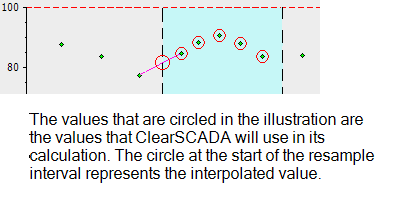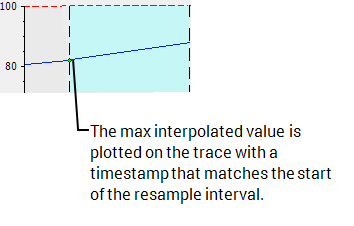The Max Interpolated algorithm works in a similar way to the Max algorithm, except that it also includes an extra value in the resample interval - the interpolated value. This allows ClearSCADA to calculate a maximum value even if the resample interval contains no raw historic values, and so it is ideal for situations when the maximum values need to be calculated but there are gaps in the data.
To calculate the interpolated value, ClearSCADA compares the last good quality raw historic value before the resample interval with the next good quality raw historic value (which may or may not be in the sample). It then calculates the interpolated value, which corresponds to the point at the start of the sample where a line between the ‘last pre-sample’ value and the next value would meet ( see Interpolated for more information).
ClearSCADA then examines the calculated interpolated value and the good quality raw historic values in the resample interval - the highest value is the max interpolated value.

The max interpolated value is plotted on the trace with a timestamp that matches the start of the resample interval.

If there are no raw historic values in the resample interval, the Max Interpolated value is the same as the interpolated value (that ClearSCADA calculates as part of the Max Interpolated algorithm).